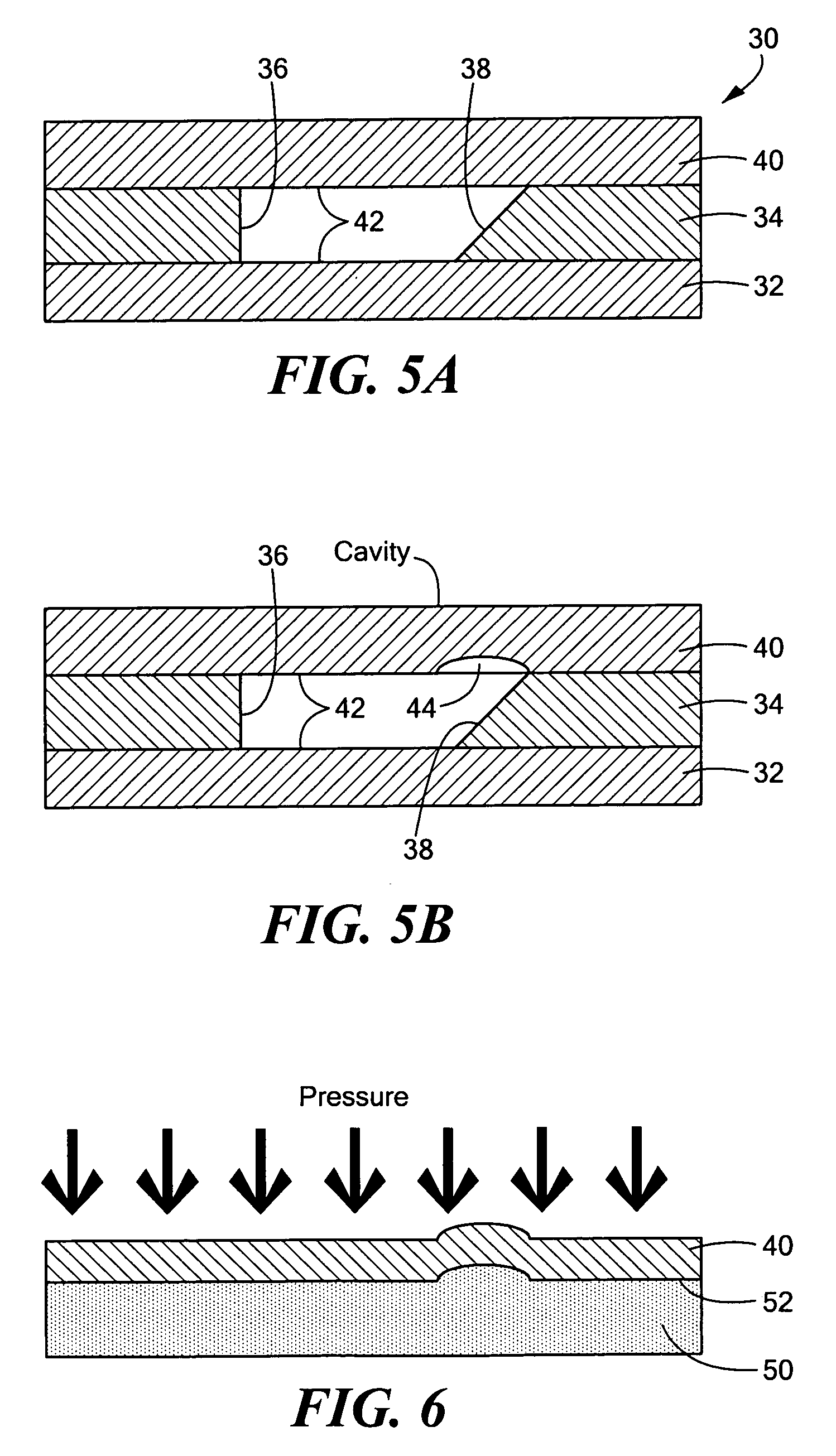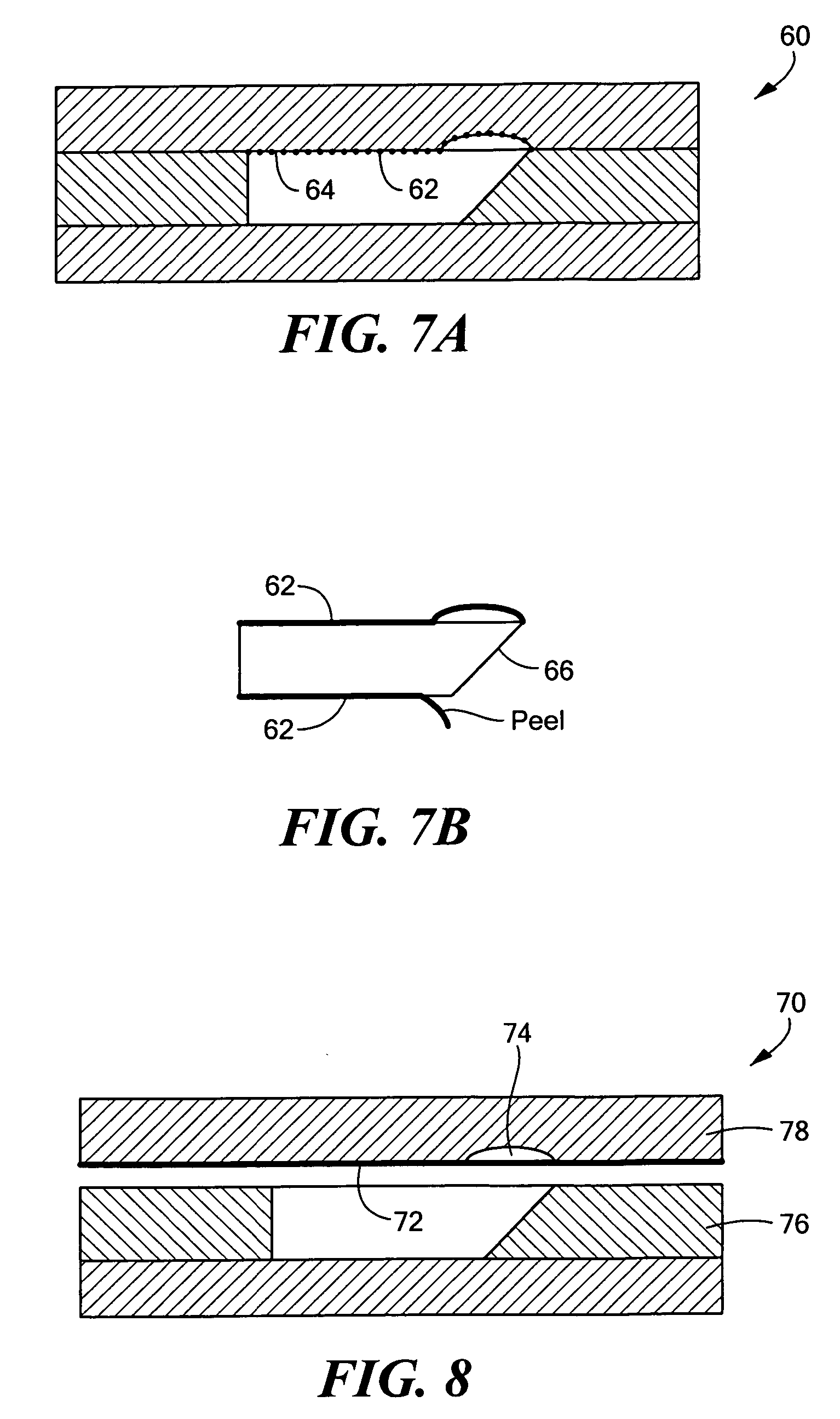Method for producing high quality optical parts by casting
a technology of optical parts and casting, applied in the direction of optical articles, domestic applications, other domestic objects, etc., can solve the problems of limited use of plastic in more demanding applications, insufficient weight reduction, and difficulty in reducing the weight of requiring bonding glass to plastic, etc., to achieve the effect of improving quality and quality
- Summary
- Abstract
- Description
- Claims
- Application Information
AI Technical Summary
Benefits of technology
Problems solved by technology
Method used
Image
Examples
Embodiment Construction
[0028] In the present invention, the difficulties of creating optical systems with protruding lenses on otherwise flat surfaces are overcome. Three method embodiments are presented. The first embodiment has optical elements including lenses, mirrors, etc. incorporated into the mold prior to filling. The second embodiment creates a low use mold from a non-machinable molding plate. The third embodiment incorporates films into the mold. Each embodiment is detailed below.
[0029] In a first embodiment of a method according to the present invention, optical elements are anchored in a mold. Thus, the mold is designed to hold one or more external optical elements such as mirrors or previously produced lenses. The external optical elements may be injection molded, polished, or produced by any other manner known in the art, prior to their placement in the mold and the introduction of a casting medium. The external optical element may, for example, be an injection molded acrylic lens, which ma...
PUM
 Login to View More
Login to View More Abstract
Description
Claims
Application Information
 Login to View More
Login to View More - R&D
- Intellectual Property
- Life Sciences
- Materials
- Tech Scout
- Unparalleled Data Quality
- Higher Quality Content
- 60% Fewer Hallucinations
Browse by: Latest US Patents, China's latest patents, Technical Efficacy Thesaurus, Application Domain, Technology Topic, Popular Technical Reports.
© 2025 PatSnap. All rights reserved.Legal|Privacy policy|Modern Slavery Act Transparency Statement|Sitemap|About US| Contact US: help@patsnap.com



